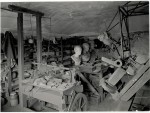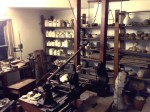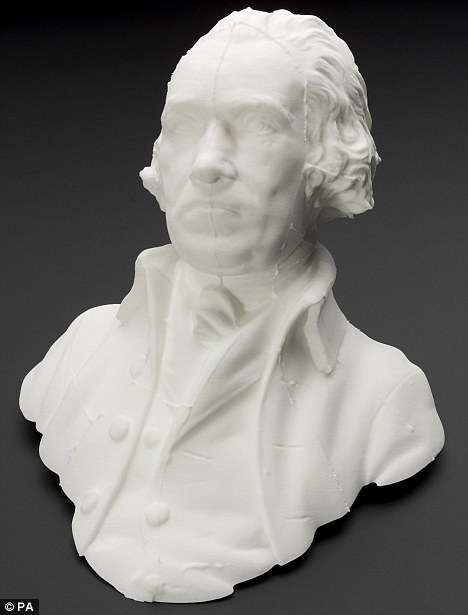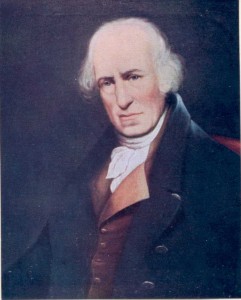 When James Watt, inventor of the separate condenser (an essential improvement to the Newcomen steam engine that helped usher in the Industrial Revolution) retired to his home near Birmingham in 1800, his wife exiled him to the garret room where he could tinker loudly and make stinky messes far from the main living areas. He continued to make new inventions in that garret workshop, among them two machines for copying sculptures.
When James Watt, inventor of the separate condenser (an essential improvement to the Newcomen steam engine that helped usher in the Industrial Revolution) retired to his home near Birmingham in 1800, his wife exiled him to the garret room where he could tinker loudly and make stinky messes far from the main living areas. He continued to make new inventions in that garret workshop, among them two machines for copying sculptures.
He died in 1819, and his workshop was locked and left untouched until 1853 when his biographer J.P. Muirhead was allowed to view it. After that, visitors to Watt’s home — he became something of an Industrial Revolution hero and his house was a pilgrimage site — would sometimes get a glimpse of the garret, but nothing was touched or moved.
 When the house was demolished in 1924, the entire workshop, including the door, window, skylight, floorboards and 6,500 objects used or created by Watt, was moved to London’s Science Museum where it was on display for years until the gallery it was in was closed.
When the house was demolished in 1924, the entire workshop, including the door, window, skylight, floorboards and 6,500 objects used or created by Watt, was moved to London’s Science Museum where it was on display for years until the gallery it was in was closed.
On March 23, the workshop will finally open again to visitors. In preparation for the new exhibit, museum staff examined a collection of 26 plaster molds Watt had created, some of them still bound in the original string. There were molds for a lion, a variety of deities and one person that curators thought might just be James Watt himself.
The early 19th century mould consisted of 25 separate pieces and was thought too fragile to allow a plaster cast to be taken.
It was examined with a colour triangulation scanner to produce a perfect digital “cast”, enabling a sculpture to be created. […]
Andrew Nahum, Principal Curator of Technology and Engineering, said: “Finding a new representation of a major national figure like Watt is a real discovery, a quite exceptional event. The bust is not in the historical record and its display in the gallery will be the first time it has ever been seen in public.
“Aside from the scarcity of the image, the bust itself is of high artistic quality. In fact, Watt devoted much of his own time in later years to copying sculpture.
“Perhaps surprisingly, as a result of his interest in this area, the Science Museum holds what may be Britain’s largest collection of early 19th century sculpture moulds.”
The Science Museum has a wonderful blog with a whole section about Watt’s workshop. It’s very much worth a read.
Here’s a rough sculpture of Watt’s bust cast from the mold compared to a late portrait. They’ll be making a neater one for the exhibit.


Did he have a wheelbarrow?
Probably steam-powered.
EXACTLY.
very intresting article!
Thank you. :thanks:
The Science Museum blog is very interesting. The copy is well-written and there are many good-quality photographs to view. Thanks for bringing that site to our attention.
My pleasure. I spent half the day yesterday reading it myself.